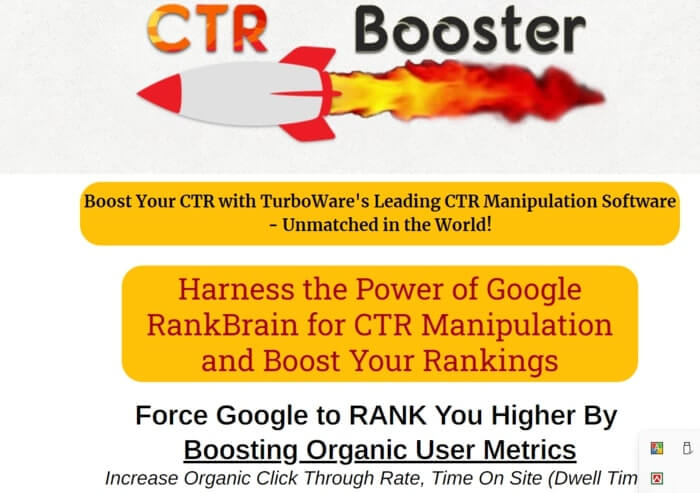Enhance Your Local Listings with Specialist GMB CTR Manipulation Strategies
Exactly How to Gauge the Impact of CTR Control on Your Advertising
Comprehending the nuances of click-through rate (CTR) adjustment in advertising is essential for organizations aiming for authentic user involvement. By examining essential metrics such as conversion prices and bounce rates, marketing professionals can discover possible discrepancies that may emerge from man-made improvements.
Understanding CTR Control
Recognizing CTR adjustment is essential for marketing professionals seeking to maximize their projects and make sure information stability. Click-through rate (CTR) refers to the ratio of individuals who click on a certain web link to the complete number of users who watch the ad or web content.
The effects of CTR control extend past plain information distortion; they can weaken trust in electronic advertising. When organizations rely upon filled with air metrics, they might spend in inefficient campaigns, ultimately harming their roi. In addition, systems may punish marketers engaging in such practices, resulting in further implications for their advertising and marketing initiatives.
To successfully combat CTR manipulation, marketing professionals must develop a comprehensive understanding of their data resources and analytics tools. By utilizing sophisticated monitoring techniques and looking at website traffic sources, they can make sure and recognize uneven patterns that their efficiency metrics show authentic user engagement - LinkDaddy CTR Manipulation. This watchfulness is crucial for cultivating lasting success in a progressively affordable electronic landscape
Key Metrics to Examine
Effective evaluation of vital metrics is essential for examining the real performance of advertising and marketing campaigns and identifying potential CTR control. One key metric to take into consideration is the Click-Through Rate (CTR) itself, which represents the proportion of users that click on an advertisement to the overall number of customers that view it. An abrupt spike in CTR might suggest control, requiring additional investigation.
Furthermore, checking conversion rates is vital. A high CTR with a low conversion price could indicate that the clicks are not real or that the targeting is misaligned (LinkDaddy CTR Manipulation). Likewise, examining bounce prices can provide insight into individual involvement; a high bounce price after a click may suggest that the website traffic is not quality-driven.

Tools for Dimension

In addition, A/B screening devices such as Optimizely or VWO can facilitate experimentation with different advertisement versions to establish which components drive greater CTR. These tools allow online marketers to evaluate real-time performance and make data-driven adjustments. Social media analytics tools, like Hootsuite or Sprout Social, can additionally contribute in understanding CTR within social systems, offering understandings into audience behavior and interaction fads.
Additionally, warm mapping tools, such as Hotjar, can disclose just how customers interact with ads, aiding to identify where improvements can be made. Incorporating these tools creates a durable measurement framework, making it possible for marketing professionals to recognize the impacts of CTR manipulation properly. Ultimately, the appropriate option of measurement devices is crucial for making educated marketing choices and enhancing project performance.

Evaluating Long-lasting Effects
One must think about the lasting results of CTR adjustment on total advertising performance, as short-term gains can commonly mask deeper implications. Over time, unnaturally blew up click-through rates might result in decreased depend on from customers and online search engine alike. When users continuously experience deceitful techniques, they might end up being hesitant to involve with the brand name, resulting in reduced conversion prices in the future.
Additionally, formula updates from systems such as Google are made to prioritize authentic engagement over filled with air metrics. Consequently, businesses that count on CTR manipulation may find themselves penalized, leading to a decline in organic reach and presence. This can have a plunging effect on brand trustworthiness and client loyalty, inevitably threatening the extremely goals that the first control sought to attain.
In addition, the data collected from manipulated CTR might misinform marketers in their approach advancement. Counting on manipulated information can lead to misdirected campaigns that fall short to resonate with the go target market, bring about wasted resources and missed chances. As a result, it is important for online marketers to assess the long-lasting ramifications of CTR control and prioritize sustainable, moral interaction approaches for lasting success.
Moral Considerations in CTR Adjustment
In the realm of electronic marketing, ethical considerations bordering CTR control are extremely important. While the wish to enhance click-through prices (CTR) can result in temporary gains, the prospective lasting consequences on brand stability and consumer count on can not be forgotten. Controling CTR additional reading typically involves methods that may misdirect users, such as clickbait headings or deceitful marketing techniques. These strategies can lead to a short-term increase in website traffic but may ultimately wear down customer self-confidence.
Furthermore, honest worries reach compliance with laws such as the Federal Profession Commission (FTC) standards, which mandate openness in advertising and marketing. Failing to abide by these requirements can reveal companies to lawful ramifications and damage their credibility. Marketing professionals need to take into consideration the implications of their techniques on user experience and the wider sector landscape.
In addition, the rise of man-made knowledge and automation in marketing presents additional moral issues. The potential for mathematical predisposition or the exploitation of consumer information questions about liability and fairness. Ultimately, moral advertising practices need to focus on transparency, sincerity, and respect for the customer, promoting lasting connections that transcend simple metrics like CTR. Balancing efficiency with ethics is important for lasting success in the electronic marketplace.
Conclusion
In final thought, measuring the impact of CTR adjustment on advertising and marketing needs an extensive analysis of key metrics, consisting of click-through prices, conversion rates, and bounce prices. Inevitably, a data-driven technique makes sure that advertising and marketing approaches are effective and aligned with genuine user interactions.
Comprehending the nuances of click-through price (CTR) control in advertising and marketing is essential for businesses striving for real customer involvement.Reliable evaluation of key metrics is vital for reviewing the real efficiency of advertising and marketing projects and finding prospective CTR manipulation.One have to take into consideration the lasting results of CTR manipulation on total marketing efficiency, as short-term gains can commonly mask deeper ramifications.In the realm of look at more info digital advertising and marketing, ethical factors to consider surrounding CTR control are paramount.In final thought, gauging the effect of CTR adjustment on marketing needs a thorough analysis of crucial metrics, consisting of click-through rates, conversion prices, and bounce prices.